Three Hundred Terror - 1966 Chrysler 300
The 1966 Chrysler 300: First of the "non-" Letter Cars
09/23/2018


Don't get us wrong. We like big-bore Mopars just as much as most people, possibly including you. Trouble is, too many people who like powerful products from Chrysler Corporation have developed tunnel vision and don't easily realize that they're not limited to Hemi-powered B-or E-bodies. It's a condition abetted by too many magazine articles and covers raining hosannas on said muscle cars, over and over and over again.
It doesn't have to be that way. You don't have to pony up the price of a nice pad in Palo Alto to enjoy real clenched-fist power in a Chrysler product. It doesn't even have to be in a compact or mid-sized package. You can instead opt for a full-size Chrysler (or Dodge, or Plymouth) from the second half of the Sixties, when you could truly have your cake and eat it too: gobs of room, comfort and punch, all in one smart-looking package.
Take 1966, which was a watershed year at Chrysler dealers in at least one respect: For the first time, Chrysler offered a 300 hardtop without the "Letter" that had signified each succeeding year of production since the Hemi-powered C-300 was introduced for 1955. The last V-8 Letter Car was the 1965 Chrysler 300L, and Chrysler had actually been offering Letter and non-letter 300s as separate models since 1963. In 1965, Chrysler sold 27,678 300s all body styles, compared to just 2,405 300L hardtops and 440 convertibles.
That likely convinced the bosses that dropping the letter entirely for 1966 was no big deal. It wasn't--sales of 300s leaped to 49,598. The letter wouldn't return until 2000, when the front-drive, V-6 Chrysler 300M first appeared.
Those 1966 300s included 24,103 hardtops, the line's most popular body style. Gordon Foster and his wife, Sherry, own a remarkably well-preserved, low-mileage example of the 300 done up in perfectly named Scorch Red below the beltline, with a white-painted steel roof. It's the culmination of his decades of fascination with large Chrysler products, which began when he sold De Sotos and Plymouths in 1960 before starting a career with the Wickes Lumber Co.
"In 1966, we ordered a brand-new Plymouth Sport Fury optioned just the way we wanted it. It was Flame Red with a white top and a black-and-white interior, and ever since I got rid of it, I've been trying to find another, especially with the same interior," Gordon said. "The Chrysler has the same lines as the Plymouth, the same colors inside; and when I saw this one, I just about fell over."
This generation of full-size Chrysler styling, which first appeared in 1965, was the direct result of a lot of other people falling over when they got a look at what preceded it. Those were the wildly sculpted 1963 and '64 Chryslers whose design had been supervised by the eccentric Virgil Exner, which left Chrysler sales buried in 11th place and led to Exner's exit, with Ford styling veteran Elwood Engel hired in desperation as his replacement.
"Exner went basically because his ideas were just too far out in left field," was Gordon's assessment. "The bean counters at Chrysler finally realized that if they wanted to get to number three like they wanted, they weren't going to do it with these bizarre-looking cars."
The full-size Chryslers were one of Engel's first projects, and their crisper, more orderly looks caused sales to jump 55 percent in 1965. Two of the 300L's more memorable elements were the standard 413-cu.in. wedge V-8 with a Single Carter 3880S four-barrel and 360hp, and a little plastic "L" in the grille that lit up when the headlamps were on. Both would be gone when 1965 ended, but sales would be up 12 percent.
Gordon's 1966 300 represents a refinement of Engel's themes. The sheetmetal's minor revisions gave it a little edgier, but still fresh, appearance. In 1966, the 300 was fitted with a slightly longer hood. It also received one-year only roof treatment that Gordon maintains was copied from the 1963-1/2 fastback Ford Galaxie's. It also borrowed the rear quarter panels from the 1965 New Yorker so it could be fitted with wraparound tiallamps, and two decorative finned pieces were inset into recesses in the front-fender sheetmetal.
"It really was quite a unique car despite the fact that it had no letter," Gordon said. "I never did find out if the windshield is interchangeable with other 1 966 Chrysler models."
What was interchangeable was a new version of the vaunted wedge V-8 that powered the 300 series. Since 1959, the Letter 300s' exclusive engine had been the 413-cu.in.V-8, although by 1965, the vaunted twin-carburetor, cross-ram induction system was off the option list. The basic 383-cu.in. wedge had, itself, been around since 1959, although it took Chrysler two years to adopt the short-deck B-series version of the engine, with a larger 4.25-inch bore that was originally intended for Dodge and De Soto use, as its own. The marriage had legs, with the B-series 383-inch big-block hanging on in full-size Chryslers until 1 971.
In 1966, Chrysler offered two 383s, the base Newport engine with a 9.2:1 compression ratio and 270hp, and the 300's powerplant topped with the Carter AFB 41 30-S four-barrel, its compression bumped to 10.1 and rated at 325hp, which may have deadened some of the purists' wailings that the non-letter car wasn't worthy of the 300 badge--which, naturally, stood for 300 horsepower.
Gordon has owned 25 to 30 collector cars of various types as an adult, and dabbled in selling them to make a few bucks. He was looking for one last score, a full-size luxury Mopar with a big engine, a car that, as he put it, "was enough to keep me busy and broke for the rest of my life." After some searching, he learned of a 1966 300 a couple of hours west of him, outside St. Louis. He grabbed a local car-collector pal, and they headed off to check it out.
The 300 had enjoyed loving treatment, at least for part of its life. It was originally sold new to an elderly retiree from St. Louis, who didn't use it daily, and had put only 8,000 miles on it before he became ill in 1979 and was unable to drive any more. He died the next year, and his relatives, Gordon related, "didn't want the car. They put it into deep storage in a warehouse for 1 0 years, covered it up, and put some kind of grease on the bumpers to preserve the chrome."
In 1990, the car's second owner acquired it through an estate sale; removing the cover, he found the original paint filthy and thoroughly scratched, as the warehouse operators had been using the
300 as shelving for cartons. He was nonetheless taken with its completeness, originality and otherwise impressive condition, including the black-and-white upholstery. He refinished the car at a local body shop, thoroughly cleaned it and had the engine compartment detailed. He'd only put another 4,000 miles on it when Gordon and his friend showed up.
"It was beautifully painted; I looked and looked at it and I couldn't find a single flaw," he said. "I only know that the paint was basecoat with clearcoat, and I knew I had to have the car. My buddy hates Chryslers, but even he said that if he was going to buy a Chrysler, this would be the one. I had to sell two cars to pay for it--a 1956 Lincoln Capri, one of 4,500 built, and a 1 948 Nash with 30,000 original miles and a repaint."
Gordon has done virtually nothing to the 300 since he acquired it. The second owner had it retrofitted with 11,2-inch dual exhausts--for some reason, the stock 300 only came with a single exhaust. Gordon went a step further by tipping them with Flowmaster low-restriction mufflers. Option-wise, it's pretty well equipped as 300s from 1966 go, except for the optional center console and floor shift. The three-speed TorqueFlite automatic is, controlled from the steering column. The 300 was delivered with Goodyear bias-ply whitewalls, power steering, power drum brakes, AM radio, an interior light package, turn indicators atop the front fenders and a tissue dispenser built into the glove compartment. The original spare tire has never been on the ground. One issue Gordon does have with the car, ergonomically speaking, is its huge semicircular speedometer cluster, about 14 inches wide, which essentially wraps around the top of the steering column.
"It covers basically the entire spectrum in front of you, and under the speedometer there's a little gauge for fuel, and toward the passenger side, an ammeter," he explained. In the cluster, there's just a little green light that says "cold" when you first start it and goes out as the engine gets progressively warmer, and as you keep driving you just hope the red one (overheating) doesn't come on. I'd much rather have an actual temperature gauge. Warning lights do burn out, and when it's too late, it's too late."
With the higher-compression 383, and a hair under two tons of heft, the 300 is fully capable of bringing the heat. Gordon has never run his 300 down the quarter-mile, but has some great anecdotal evidence of its strengths, and shortcomings, depending on the terrain it's attacking.
"In terms of speed, it's pretty awesome. It's not a ground-pounder, but boy, it will go, especially if you're doing 55 or 60 mph and get it down into passing gear," he said. "One time, I was driving along on this long, straight road where I could see about three miles ahead of me, and this nitwit pulls up behind me in a Chevy Lumina and just sits there, right on my bumper. I let him go, and I could see that it was one of the hot Luminas because it had the little dual exhausts on each side. I waited 'til he was about a quarter-mile ahead and just nailed it, kicked it down, and those other two barrels opened up. I was on him in a heartbeat and went around him like he was tied to a tree, doing at least 90."
When the road starts to get sinuous and undulates, sort of like the top strand on a plate of overcooked Ronzoni linguine, the 300 does have one built-in handicap, its BF Goodrich Silvertown bias-ply whitewalls. Underneath, it also has aftermarket Monroe Pleasurizer hydraulic shocks, which were probably installed as replacements by the original owner back in the Seventies.
"I would like to put radials on it, mounted on a set of the Chrysler wire wheels, which would really set it off, but I have to save my pennies now that I'm retired," he said. "There are two good words here, torsion bars. They really help in cornering and help with anti-dive. In terms of body lean, there's virtually none, but the bias tires just don't grip. There's a road that goes to Turkey Run State Park with about 13 miles of bad curves, and if you get into one even a little too fast, you've really got to crank on the steering. But it stops excellently. I never tried to lock the brakes up, but I probably could."
For the most part, Gordon sticks fairly close to his home in west-central Indiana with the 300, preferring not to run up its impressively low odometer reading too drastically. But when he does hit a show or a cruise night, the Chrysler is on the street.
"I just don't like trailering cars," he said. "If you can't drive a car you're collecting, how are you supposed to enjoy it?"
Owner's View
GordonFoster of Hilisboro, Indiana, insists he's a Ford guy, or at least he was in his earlier years, but you'd be hard put to tell it by theway he gets woozy over his and his wife's 1966 Chrysler 300.
"I don!t think they could even spell ergonomics backthen, but this car is very roomy and comfortable, and it's everythingi ever hopedit would be. I was at a meet and I picked up an extremely rare brochure, a Chrysler brochure on traUering, and every single car in it is a red 66 300 like mine.
"The only really noticeable quality issue I have is the attachment of the rain gutters to the top, and the top to the body. There are several little places where you ~an see the welding wasn't. great;. it's wavy. I would have straightened it out, but I was so impressed with the originality of the car that I left it that way. 1 got invited to a concours with Duesenbetgs, Cords, Packards, the most gorgeOus cars you could think of, and I won first in my class. I was thrilled.
"Can you tell that I'm proud of my car?" --Jim Donnelly
Wagons are arguably the most practical form of transportation. By extending the relatively low roofline of its sedan counterpart, wagons offer plenty of precious cargo space while still retaining a lower center of gravity for zippy handling and spirited driving whenever the urge may hit. Despite all the fun that can be had in a wagon, massive high-riding SUVs and Crossovers have taken over the modern-day automotive market.
The SUV trend is unstoppable and new wagon models are becoming scarcer as years pass. Back in 1975, sedans and wagons dominated nearly 80-percent of the U.S. vehicle market. More recently, new SUV and truck sales have climbed to around 80-percent since 2011, taking the place of smaller sedans and their longroof model varieties.
In the classic car market, wagons are rapidly gaining popularity. Like the old saying goes, “They don’t make them like they used to.” Classic wagons exude a style that isn’t seen in today’s automobiles and car enthusiasts are gobbling them up like candy. Here are 15 examples of what is available in the classic wagon market today.
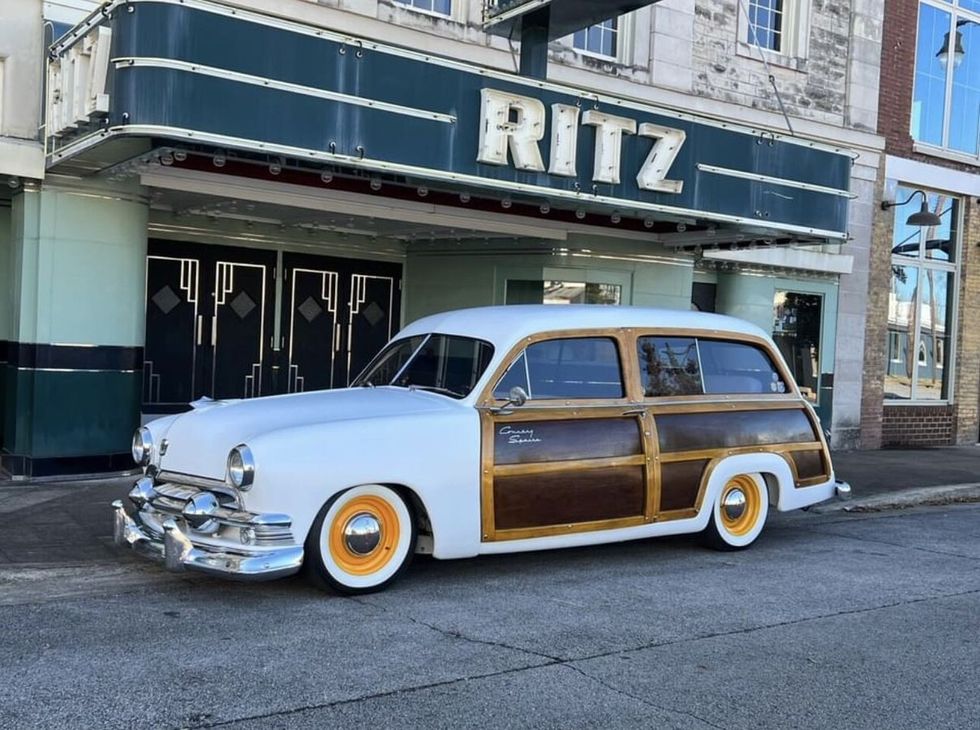
Everybody loves a classic woodie wagon! This two-door 1951 Ford Country Squire wagon still sports its original wood paneling, not that fake plasticky stuff seen on the more modern “wood” wagons. The seller states it is a fresh build that has only been driven 500 miles. A 350-cid Chevy Vortec Engine is hidden under the hood. Tasteful modifications include a Fatman Fabrications front end, an 8.8-inch rear end, power steering, four-wheel power disc brakes, and an all-new interior.
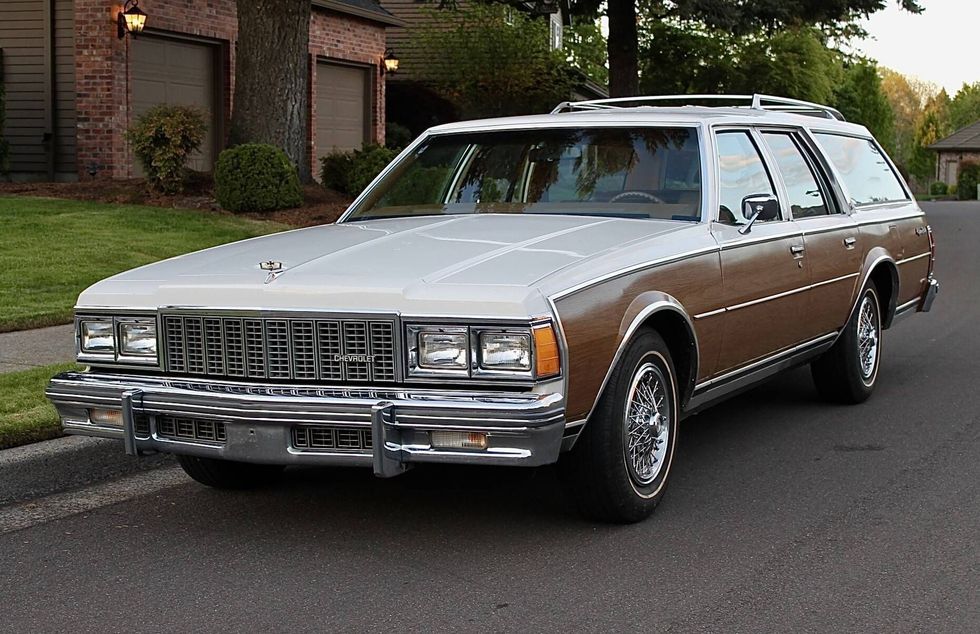
As stated in the auction listing, here’s a family hauler that would draw envious glances from Clark Griswold, this 1979 Chevrolet Caprice Classic Station Wagon is believed to be in original condition apart from maintenance and service requirements, according to the selling dealer, who acquired the woodgrain-trimmed wagon through an estate sale. There’s a 350 V8 under the hood and the seller notes service within the past few thousand miles has included new brakes, a new water pump and radiator, valve cover gasket, muffler, and more. Click here to see the full auction details.

“Experience the epitome of vintage charm and modern performance with the 1964 Mercury Colony Park, a California wagon that's been meticulously restored and upgraded to perfection. Underneath its classic blue exterior adorned with wood paneling lies a beastly 390-cid V8 engine, now equipped with a Holley Sniper EFI system for improved fuel efficiency and smoother power delivery. Paired with an automatic transmission, this wagon delivers a driving experience that's as effortless as it is exhilarating.”

This beautiful Brookwood underwent a professional frame-off custom restoration. It’s a restomod of sorts, still sporting its classic looks while implanting some modern creature comforts and technologies. It’s powered by a 480 horsepower LS3 engine paired with a six-speed manual transmission, for starters. Cruise to the classified to see more photos, plus the full list of custom goodies included in this immaculate 1959 Chevrolet Brookwood Nomad.
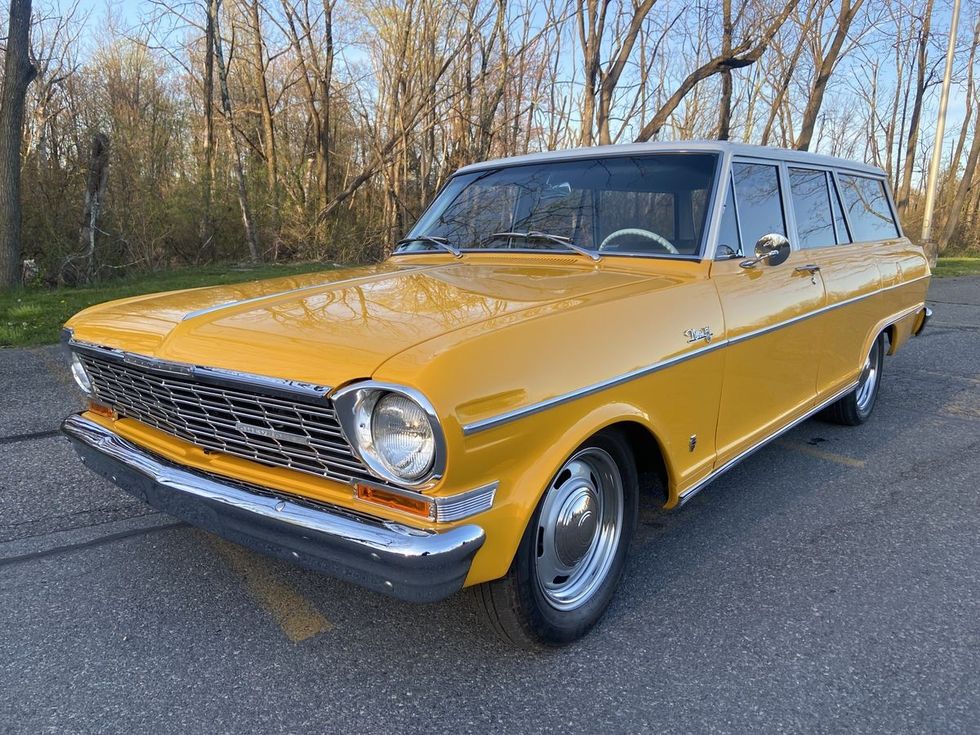
You’ll be hard-pressed to find a classic wagon exactly like this one-of-a-kind 1964 Chevrolet Chevy II Nova. Described as a mild restomod, this station wagon has just 1,000 miles accumulated since its frame-off restoration. The seller states that everything has been done on this car and it “rides, drives, and handles way better than you would expect; straight down the road with no shimmies, shakes, or vibrations.” The craftmanship on this V8-powered Chevy wagon is described as “simply spectacular.”
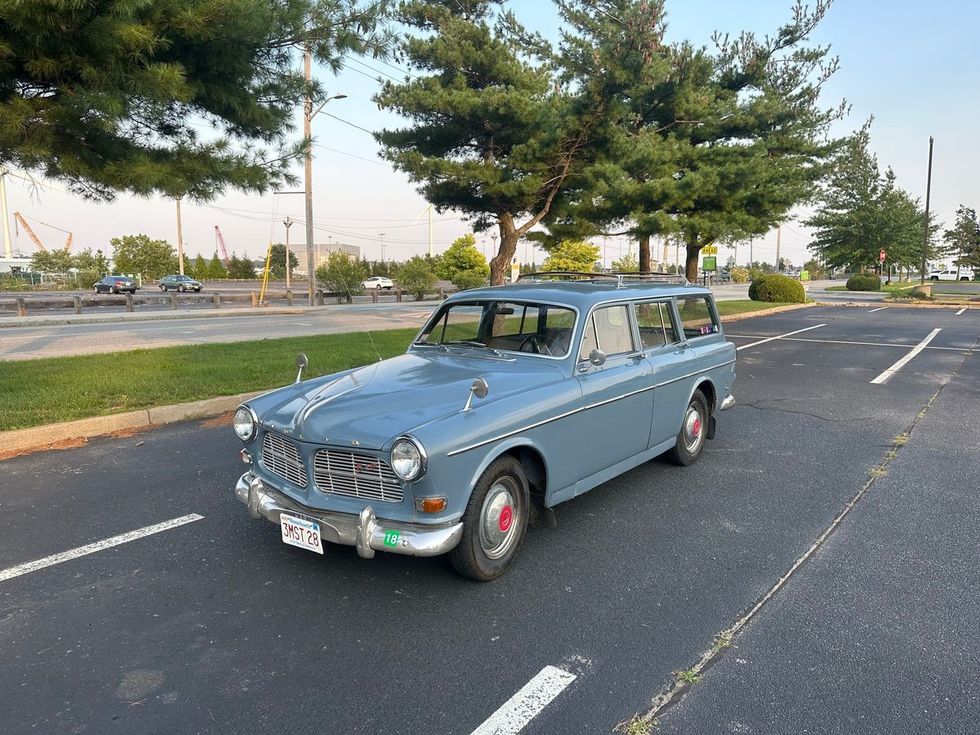
Volvo wagons are getting hard to come by, especially the 1960s-era cars. The seller states that this two-owner, mostly original 1963 Volvo 122S B22 was used as a daily commuter until a few years ago, has been regularly serviced, and is in good running condition with a recent fuel system overhaul. The original exterior does have some blemishes and surface rust, but the seller assures that “With a fresh paint job, she would really turn heads!”
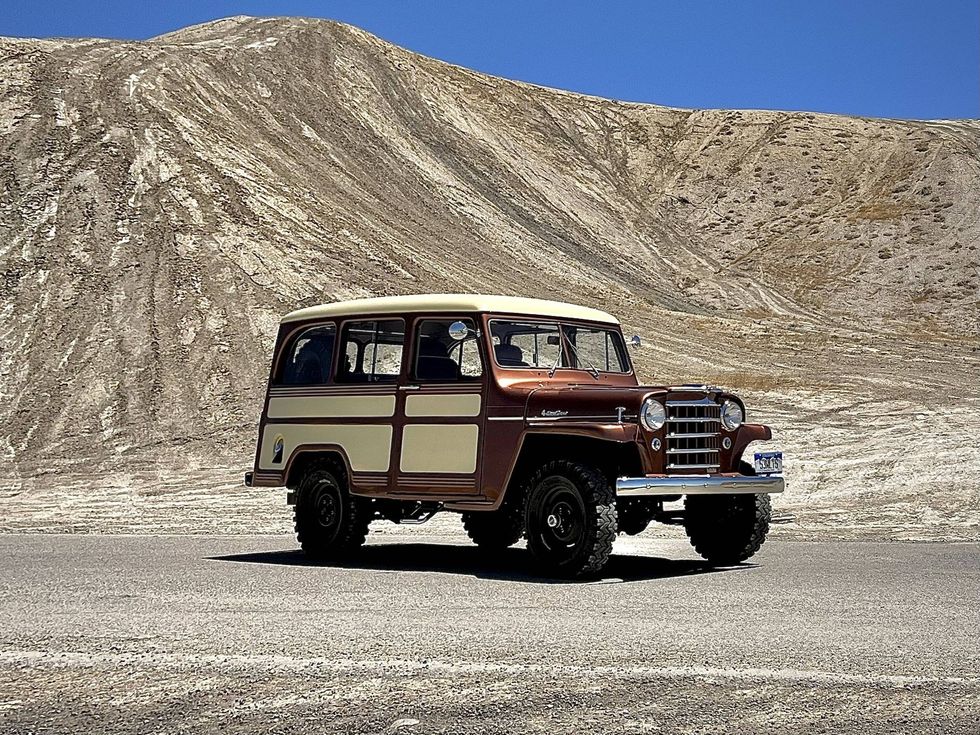
“There are refurbishments and restorations, and then there’s the kind of treatment this 1953 Willys Station Wagon has received. The work is described as a minutely detailed body-off restoration that has left the wagon in better-than-factory condition. Among the many non-production upgrades said to have been performed on this Willys are heated leather seats, a lamb’s wool headliner, a Pioneer audio system with Bluetooth capability, map lighting, and USB charging ports. The Willys is reported to have a replacement F-head engine of the same year and displacement, now rebuilt, and the wagon is described by the seller as free of rust.”

A muscle car in wagon form is what dreams are made of, especially when talking about the second-generation Chevrolet Chevelle SS. This example, a Placer Gold 1971 Chevrolet Chevelle SS Wagon, gets its power from a rebuilt 402 cubic-inch V8 producing 350 horsepower paired with a T-10 4-speed manual transmission geared with a 10-bolt rear end, plus other great features.
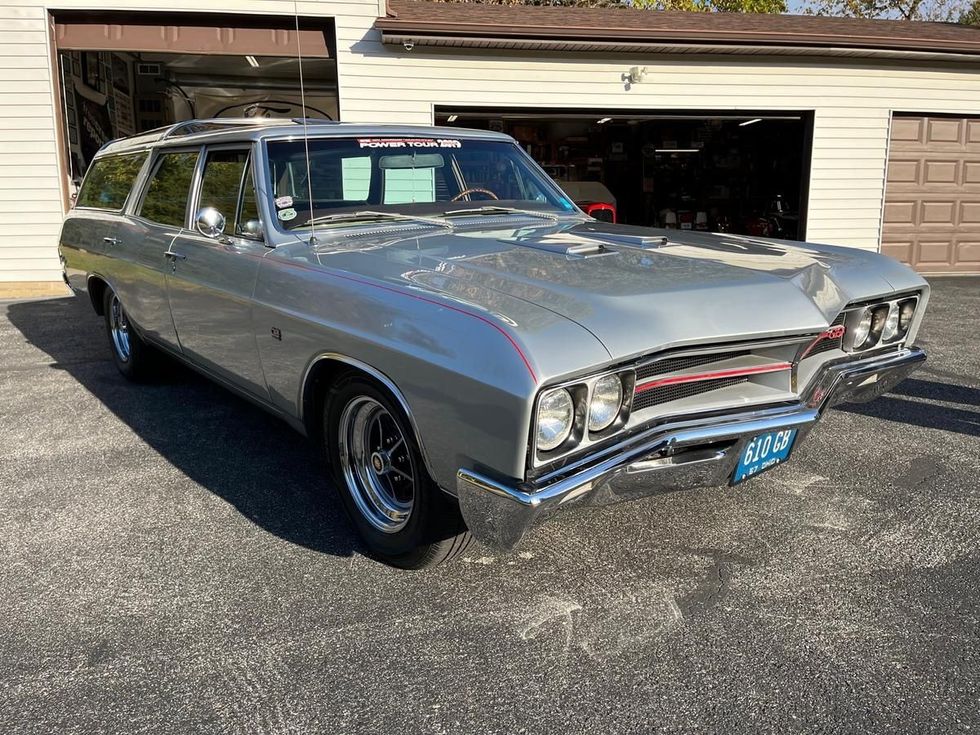
The sky roof (or panoramic roof) on this 1967 Buick Sport Wagon GS adds to this classic car’s luxurious feel. The seller states it is powered by a 350 cubic-inch small-block topped with four-barrel carbs and a Star Wars-style air cleaner. The wagon is described as rust free and ready to drive.

According to the seller of this custom 1956 Ford Parklane Two-Door Wagon, it is so clean that you can “eat off the door jams and spare tire well.” The mild custom sports a 312 cubic-inch V8 paired with an automatic transmission, plus loads of other goodies, including a custom interior. Take a close look at the photos supplied in the Hemmings Marketplace classified listing.
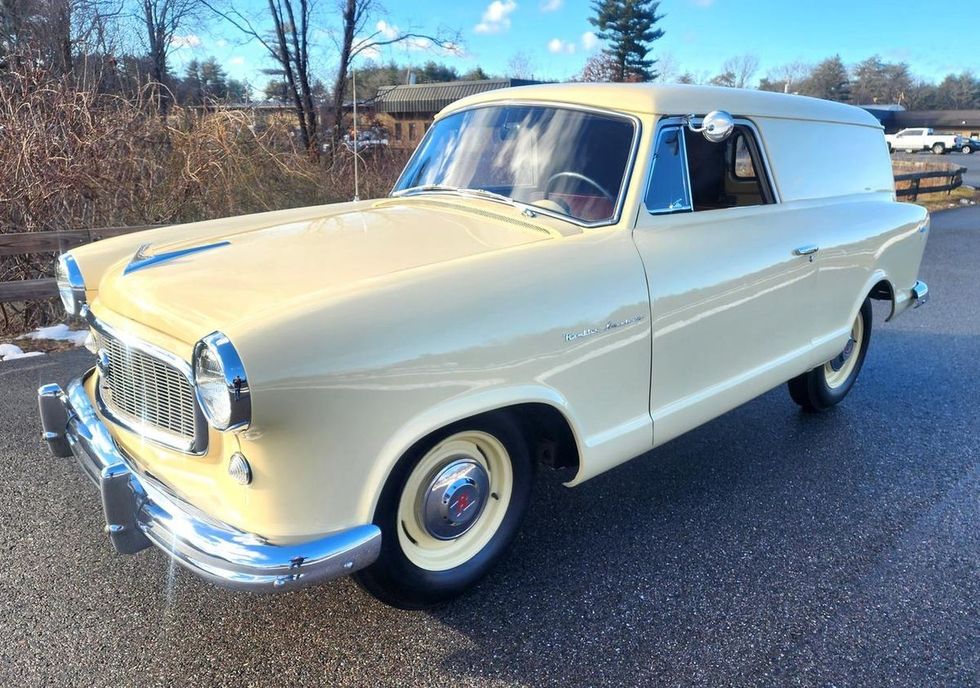
This extremely rare wagon is just one of only three examples produced, and the seller confirms that they do have the production records as proof. Previously owned and restored by the founder of the AMC club of America, the 1959 Rambler American Deliveryman Panel underwent what is described as an exceptional nut and bolt rotisserie restoration just a few years ago. It’s powered by an inline-six engine backed by a three-speed manual transmission, and the engine bay, among other details, is described as stunning.

The classic Chevrolet Bel Air embodies the American Dream of the late-50s, and its V8 engine signifies the era of American muscle. This elegant wagon is offered with an automatic transmission for easy cruising. The seller also states that the 1957 Chevrolet Bel Air is equipped with air conditioning, its classic AM radio, power brakes, and power steering.

If you’re searching for a wagon that will stop passersby in their tracks, look no further than this flame-adorned 1950 Oldsmobile. Under the hood you’ll find a powerful 5.7L Vortec 350 cubic-inch V8 paired with a smooth-shifting four-speed automatic transmission. The seller states, “this Oldsmobile Wagon is not just about looks and performance, it’s also equipped with a range of features designed to enhance your driving experience.” Get the full details here.

This unrestored 1959 Plymouth wagon shows 78,800 original miles on the odometer. The 318 polyhead Mopar engine is topped with a Holly two-barrel carburetor and exhales through a dual exhaust system. Don’t let the main photo of this beautiful machine on a trailer fool you: The seller states that the car is in survivor condition and it drives without issues. Check it out.

This two-door, six-passenger, V8-powered 1958 Edsel Roundup wagon is described by the seller as a no expense spared custom. The customizations were completed by its owner, Frank Montelone, alongside his long-time friend, the legendary George Barris of Barris Kustoms, which makes this custom wagon an incredibly rare find.
There are more wild wagons where these came from. As of this writing, there are around 50 classic wagon listings on Hemmings Marketplace. Take a look!
Ray pile was a part of the immediate post-World War II generation of hot rodders. During the war, he was a waist gunner in Boeing B-17 Flying Fortress bombers attacking Nazi-occupied Europe and afterward he returned to his home in Southgate, California. This is his car, the Pyle Special. Not much is known about its life before Ray got ahold of the Ford. It was just one of millions of Ford Model A’s produced for 1928-’31.
Just two years after the end of the war, an uncle got him set up running a gas station. That’s when the roadster comes on the scene, and with it, Ken Eichert, the father of current owner Chris Eichert and son of Ray’s benefactor-uncle.
Image courtesy of Chris Eichert
A mild-mannered, full-fendered roadster most of the time, one weekend each month the Pyle Special would transform into a race car bent on going as fast as possible on the dry lake beds northwest of Los Angeles.

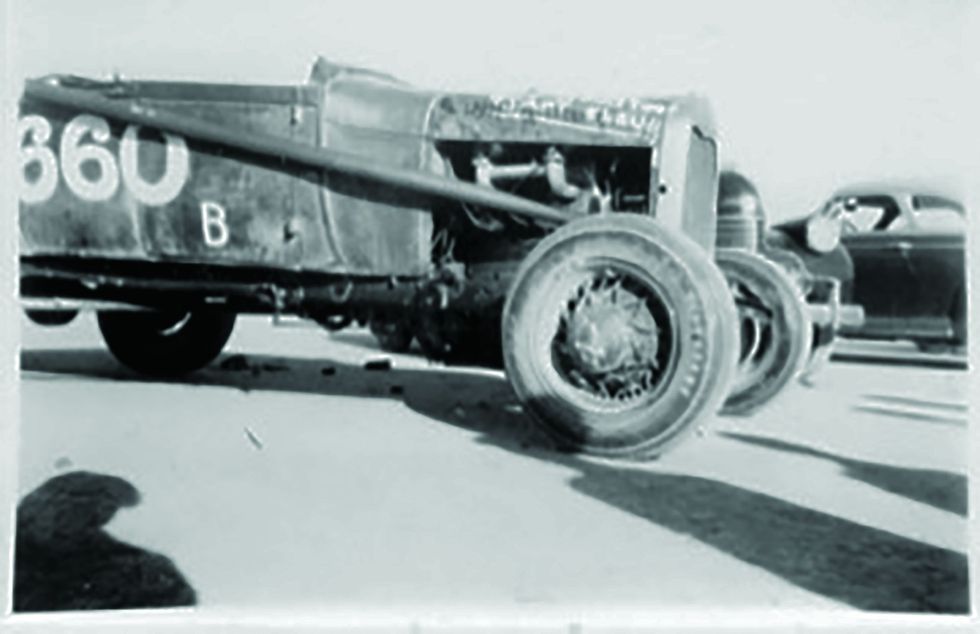

“Ray was my dad’s cousin on my grandmother’s side,” Chris says. Ken had survived a bout with polio earlier in life and was prevented from participating in most sports because of a bad leg. He discovered an outlet in the machines found at his older cousin’s shop and as an honorary member of his car club, the Gaters (note the intentional misspelling as a nod to Southgate).
“My dad was very active with Ray’s roadster. He tore it apart, worked on it, took off the fenders and installed the bomber seat for Ray to race on race day. From 1947 to 1949, Ray was going to the dry lakes with the Gaters, and the roadster was actually a dual-purpose vehicle: it ran full fendered on the street and was Ray’s get-around car, his family car, and then he would race it every month when they had a meet.”
The late hot rod historian Don Montgomery was adamant that the immediate post-World War II years represented the only pure expression of the hot rod: a true street/strip car that was driven by its owner/builder for transportation Monday through Friday and was stripped for racing on the weekends. Postwar racing for hot rods in Southern California circa 1946-’52 was largely either “the lakes”—meaning the dry lakes of the Mojave Desert, mostly El Mirage, or drag racing. At the tail end of the period, drag racing started to become formalized, on closed strips often comprised of aircraft runway infrastructure built for the war. Before that, acceleration contests were an informal activity done on public roads and facilitated by the popularity of drive-in restaurants.
Photo by Todd Ryden
This is the engine Ray raced at Santa Ana, originally built for him by Cook’s Machine Shop. Chris says it’s been drilled for full-pressure oiling, has had large valves installed, and had an unmarked but “really big” camshaft installed. It has since had fresh pistons and a milder cam installed. The Stromberg 81 carburetors are a smaller version of the 97, originally intended to equip 1937-’40 Ford 60-hp V-8 engines.



That three-faceted nature of postwar hot rods made them special and keeps them relatable today. Most roads in America are still suitable habitat for 1940s cars—whether they were new cars from 1947 or have been updated to 1940s technology. That ‘40s technology makes for a particularly satisfying operator experience—just automated enough not to be intimidating, but satisfyingly mechanical and interactive in all other respects. The sights, sounds, and smells are pure automobile, and the industrial design of every component says, “built right.”
Small wonder Chris decided to take the roadster back to how Ray had it. It even does a lot to explain why Chris’s father bought it off Ray in the mid-1960s, over a dozen years after it was last raced. It was far out of step with those times. It didn’t even have a flathead V-8. Ray had built the car to use four-cylinder power and its final engine had been a Model B unit, the 1932-’34 successor to the Model A four-cylinder and incorporating many of the popular modifications already done to make Model A engines suitable for high-performance applications.
“The motor that Ray raced with at the dry lakes was a four-banger with a two-port Riley,” Chris says. The Riley was an F-head design, or what the British and Harley-Davidson enthusiasts call “intake over exhaust,” meaning the exhaust valves retain their stock location in the block, but the intake valves are relocated overhead and actuated by pushrods and rocker arms. Even in flathead form, Model A and B four cylinders were respected for their off-the-line performance while the Ford V-8 was capable of greater top-end speed. An OHV or F-head conversion on a four-cylinder usually meant it was capable of keeping up with a flathead V-8 even at those higher RPMs. Chris would love to someday replicate that engine, which he and Ken discovered in derelict condition shortly after Ray’s death in 1987 and deemed unsalvagable.
The roadster’s final outings were to what was then Santa Ana airport. The first modern dragstrip began operation there in the spring of 1950 and Ray quit driving the Pyle Special about 1951. It didn’t move again until 1964 or ’65, when Ray sold it to Ken, who in turn held onto the car more as a keepsake than an active project. As a child, Chris would sneak into the freestanding garage where it was stored and sit in it and later it would provide plenty of father/son bench racing and swap-meet parts buying episodes.
Aside from one brief-but-memorable ride, the car sat in storage until 2007. By that point, it had suffered a couple indignities: its engine sold off to a friend’s speedster project and one fender and splash apron were brutally disfigured in a freak accident involving a large stack of tile.
“My dad was getting older. I told him I wanted to get the roadster going and he told me to bring it over. I took it completely apart and I cleaned off decades and decades of dirt. I actually saved some of it, thinking it was probably El Mirage dirt. I have two cigar vials full.”
That cleaning and disassembly venture was a crash course in postwar-era hot rodding.
Photo by Todd Ryden
The front axle was dropped back in the 1940s and installed on the roadster circa 1950. To further lower the roadster, the spring eyes were reversed on both the front spring and in the rear.




“Nothing was precisely done. It was a real trip to see what hot rodders did back then and how they put stuff together. It truly was like going back all those years. Then seeing how it evolved in the late ‘40s into the ‘50s in old pictures, as it became what it is today.
“I ended up buying the motor back from the friend with the speedster. I told him what we were going to do, and he did not hesitate to sell it back to us. I had a friend of my dad’s rebuild the motor.”
Chris then re-installed all the speed parts that had come from Ray, plus a few his father had collected along the way, notably twin Stromberg 97 two-barrel carburetors on an Evans intake and a Mallory dual-point distributor. Chris also discarded Ray’s rear-only mechanical brake setup for 1939 Ford hydraulic brakes contributed by a friend of his father. “That’s the kind of friends my dad had,” he says. “All his hot rod friends knew about the roadster and when I told them I was working on it, they gave him stuff.”
Once the roadster was going, there followed a whirlwind of father-son activity with it, culminating in the twin delights of a Hot Rod Magazine feature story of the still-in-primer roadster, and Ken getting to drive the roadster at El Mirage for the first time ever. Then, Ken died in 2011 and the roadster took another hiatus.
“After Dad died, it sat. I could not get the motor running for snot. I took it to three or four old guys who worked on old Model A’s, hot rod guys, they couldn’t get it running. I kept spending money to no result, so I mothballed it for another 10 or 12 years, from 2011 to about a year or so ago.”
Photo by Todd Ryden
“It’s a rattle can, but the coolest rattle can you could ever be in. I still drive it and have memories of my dad and wish he were there and could share the moments. Even though I didn’t know Ray, I think of him. He got this up to 116 mph and that’s a feat. I’ve probably gone no faster than 65 mph and it scared me, I couldn’t imagine doing 116.”



For help, Chris turned to a fellow member of the revived Gaters club, welder/fabricator and hardcore enthusiast of midcentury Americana, Randy Pierson.
“He’s got a period army tent, a period camp stove, he tows his roadster with a ’49 Merc four-door. The body on his roadster is all handmade. He is the pinnacle for our group who keeps us true to that era and what we do and what we don’t do and what we put our signature on as a club as far as being period correct.
“He did some body work (but he said it was one of the nicest Model A bodies he’d ever worked on). It was all hand welded, hand hammered, hand finished. We stripped off down to the color that was consistently across most of the body. He rewired it with cloth wire as it would it have been in period, and he really was meticulous to getting it back to as it was in 1947. We looked at pictures. He kept what he could keep and mimicked what needed to be done to make it true to its 1940s life.”
Also mimicking its 1940s life was the scramble to get it ready for race day. In this case, the West Coast iteration of The Race of Gentlemen, which is not a beach race but is instead held at Flabob Airport in Riverside, California, in the style of the original Santa Ana drags.

Although it still rides on a Model A frame, at some point the k-shaped crossmember from a 1932 Ford was installed, which stiffens the chassis slightly and provides built in mounts for the later transmission and floor pedals. Ray apparently lacked the tools to shorten the driveshaft, however, which pushed the engine and transmission forward slightly. During the rebuild, Chris and Randy moved the radiator back to its stock position to run an original-style hood.
Photo by Todd Ryden
“We found a bomber seat and just a couple weeks before the race, Randy had started to work on the motor to get it running and he too could not get it running right. He pulled it apart and he’s not a motor guy, but he knows enough, and one of his neighbors is an old hot rodders. We changed out the 97s to 81s because the 97s were a lot of carburetor for that little banger motor, especially in duals. Then he still had a hard time. We took out the cam, put in adjustable lifters, and at the very last second, we were trying to find a different cam for it, because we figured there was something going on with the cam. I asked a buddy if he had anything to go in my roadster and he sold me a cam and I sent all that up to Randy, who worked on it feverishly for a week to ship it back down for the races. He got it running and when he got to drive it down the street, he was surprised. ‘This thing has got it. This thing scoots.’ It runs really strong.”
That strong running paid off in a lot of fun at TROG West, giving truth to one more of Ken’s old stories.
“My daughter has a video of me racing a T/V-8 and I pass the camera behind the T, but by the time I get to the finish line, I’ve beat her. It brings back memories of my dad telling me ‘Yeah, that motor will beat some V-8’s.’ It’s one of those moments, again, of my dad’s stories from all those years ago having proof in their pudding. Those revelations keep happening.”
What’s next for this old racer? “I never did get it registered when I moved from California to Texas,” Chris says, “but I am going to get it registered.”
Hopefully, it will be back on the streets soon, paying tribute to that triple-threat nature of hot rodding’s golden era.
Photo by Todd Ryden
“We reproduced the tailpipe that’s on it from pictures. It’s built from 1938 driveshaft enclosures because of the taper they have at one end. When Ray was racing it, that’s one of the things my dad put on it every time, so that’s what we did when we were putting it back together. It’s got a killer, throaty sound to it.”

